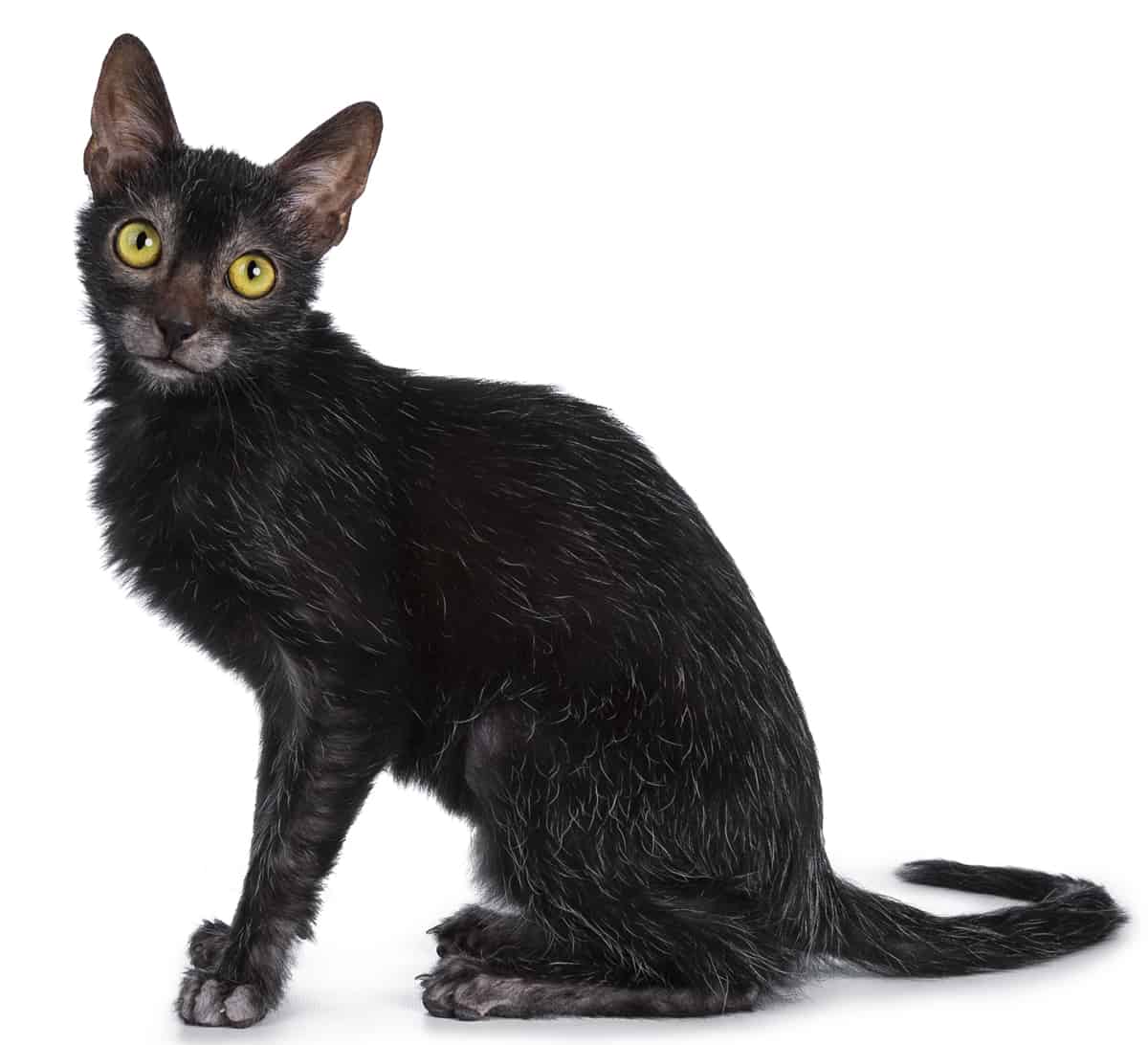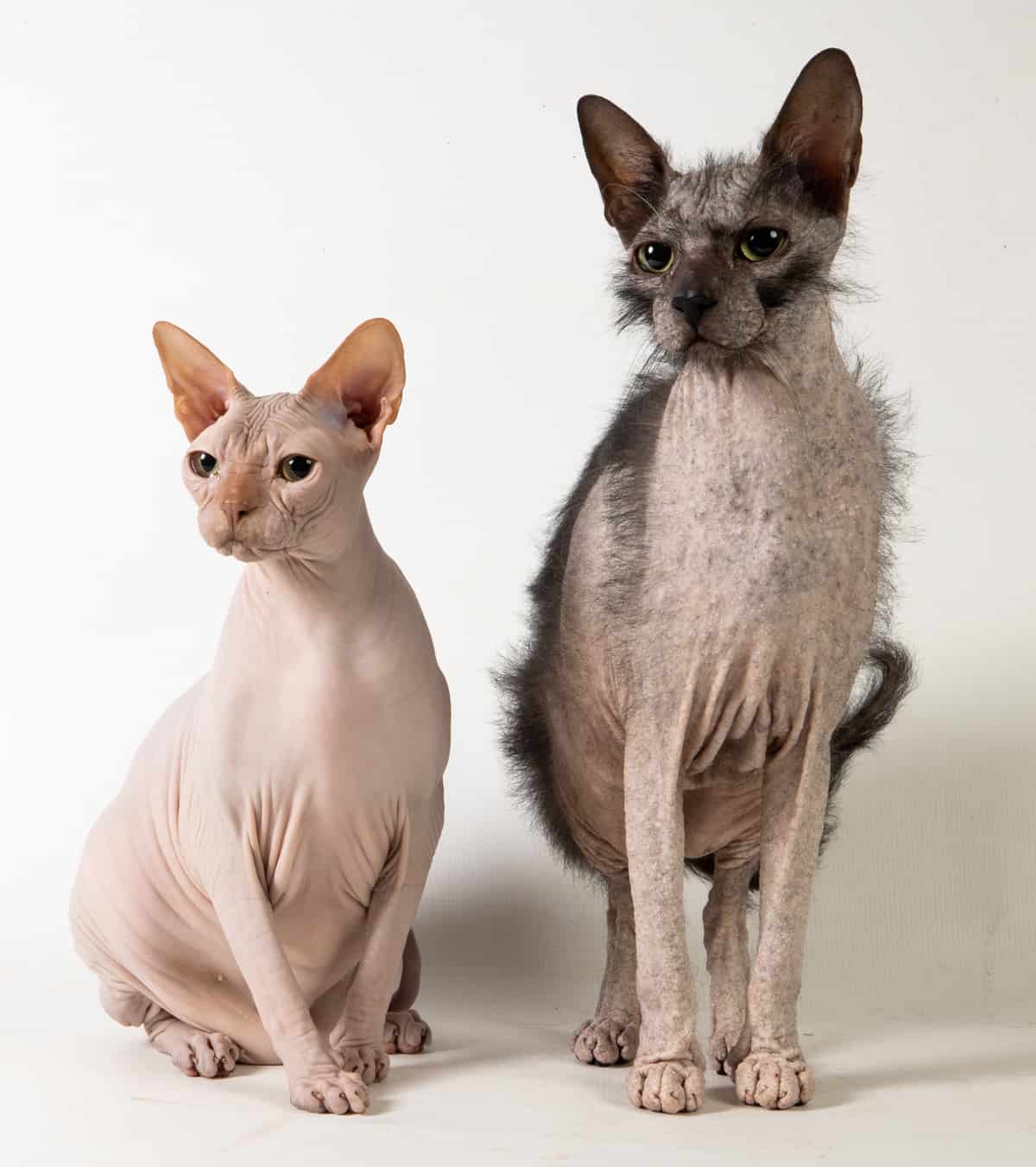When most people think of werewolves, they imagine a man transforming into an enormous wolf with blood-red eyes and sharp fangs.
The Lykoi cat breed is actually named after this mythological creature because it has similar features such as fur all over its body except for the stomach and chest, where there are no hairs.
Lykoi means “wolf” in Ancient Greek. Lykoi are also known as werewolf cats or wolf cats.
Lykoi Cats Look Like Tiny Werewolves
Lykoi cats also have large ears and short snouts. This feline has been observed as having a genetic mutation that makes them look like little mini-werewolves!

In this blog post, we will discuss what makes these cats so unique and how long this cat breed has been around.
How long have Lykoi been around, and where did they originate from?
In 2011, Patti Thomas and Johnny Gobble founded a new cat breed and declared them as the first werewolf kitten litter. In another event in 2010, a set of werewolf kittens were also found.
Both of these sets were brought to Dr. Johnny, who performed a number of tests on them to ensure that they are healthy and had no relation to Devon Rex or Sphynx cats.
The international cat association (TICA) registered the Lykoi as a new cat breed in 2012, and from 2017 onwards, this breed got the approval for championship status.
What Lykoi looks like, and how are they the result of natural mutation?
No one is sure what causes this mutation, but it’s likely due to environmental factors such as stress or other hereditary factors which trigger genetic mutations within an animal population when they’re exposed enough times at once.
Lykoi is medium in size with a toned, slender body and wedge-shaped head.
A lykoi’s coat is short and soft and mostly black roan in color.
Some lykoi cats are entirely hairless, and some have a hairless mask of skin around the nose, eyes, muzzle, and chest.
Some people may confuse hairless and sparsely haired lykoi cats with Sphynx cats as they can look similar.

Temperament of the Lykoi Cat
Lykoi cats love to cuddle with people and happily sit on lap, but they also like spending time alone. They’re curious about new things, so don’t be surprised if you find them exploring around the house.
They’re generally pretty playful creatures who will wander off occasionally, but when you need them back? They are always there for you.
Grooming a Lykoi Cat
Lykoi cats are heavy shedders, so you will need to groom your Lykoo regularly.
If their fur gets dirty or oily, this may lead to problems in other parts of their body, which can cause health issues like mange (a skin condition). It might be best if you invest in an all-natural shampoo made especially for cats.
Health concerns
Lykoi is a relatively new breed, so there are no exact issues yet known. But it is essential to check them regularly for Heart diseases, feline infectious peritonitis, and kidney disease.
Conclusion
The Lykoi is a relatively new breed of cat. They have been bred to look like the mythical werewolf.
Lykoi cats have no undercoat and very little guard hair, but they shed a lot. Their appearance is due to genetic mutation, but they are an excellent companion to keep.
References
About the Lykoi. (n.d.). The Cat Fanciers’ Association. https://cfa.org/lykoi/
LeRoy, M., Center, D., Young Kim, D., Gandolfi, B., Middleton, J., Trainor, K., Bouhan, D., & Lyons, L. (2016). Clinical and histologic description of lykoi cat hair coat and skin. Jpn J Vet Dermatol, 22(3), 179-191. (Bi-lingual article in Japanese and English)







